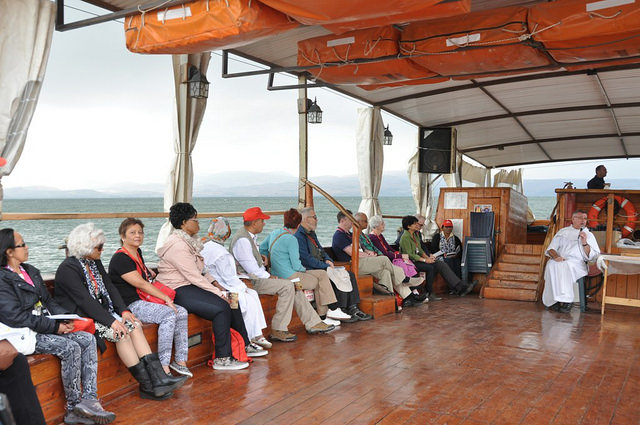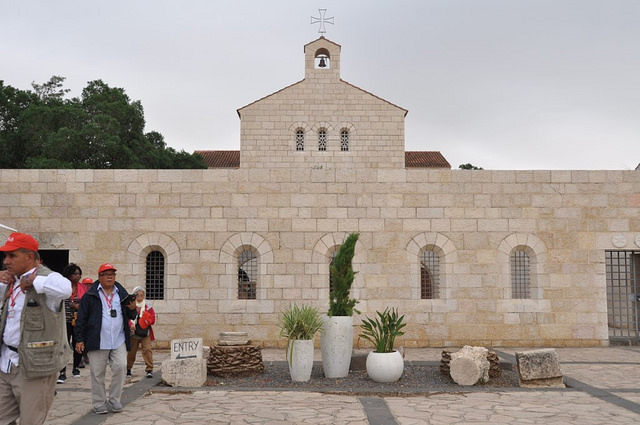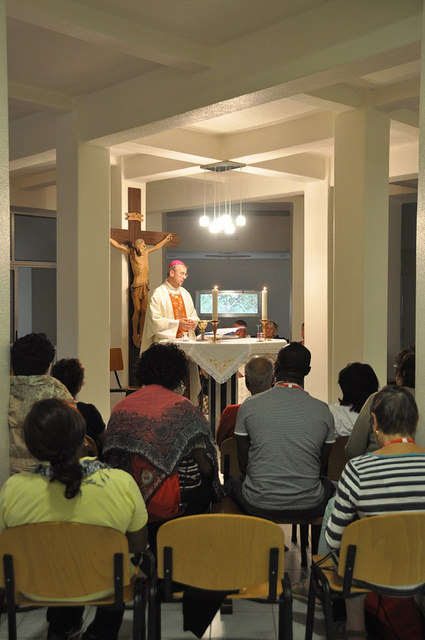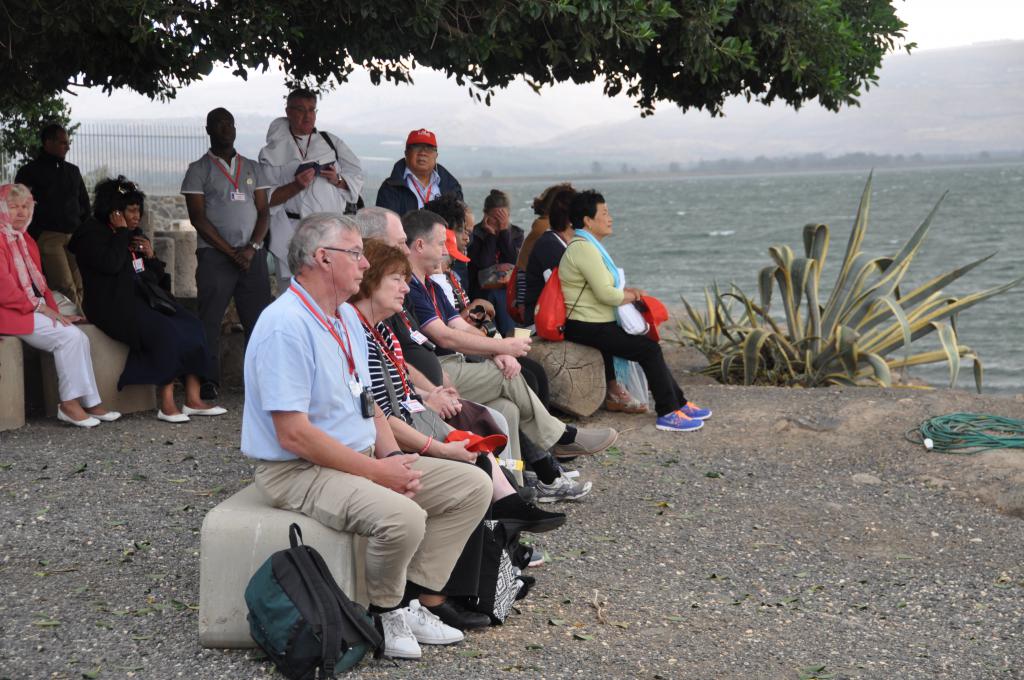Having arrived in darkness the previous evening, we had not seen the vast expanse of the Sea of Galilee in front of our hotel, but this morning we woke to breathtaking views across the Sea.
Our first port of call was further round the shore to a calmer point from which we could sail safely. Once on the boat, Fr John Farrell OP, spiritual guide for the pilgrimage, led the group in a reflection on the importance of the Sea of Galilee in Jesus’ ministry. He recalled the story from Matthew where a storm rose up in the night and Peter walked on water towards Jesus on the shore. The strong winds and choppy seas today provided the perfect atmosphere for the pilgrims to imagine what it would have been like for those on the boat that night.

Continuing along the shore, we visited the village of Capernaum where Jesus did much of his teaching and where he performed many miracles. Capernaum is now in ruins and is a protected archaeological site, so a little imagination is needed to visualise how it would have been in Jesus’ time. The foundations of the synagogue where Jesus preached are still visible underneath the ruins of a larger, grander synagogue of white stone, which provides a striking contrast against the local black basalt stone of the original foundations.
The outlines of the small rooms and houses certainly show why a man was lowered through the roof of a house to be healed by Jesus as we hear in the gospels. Capernaum is not only known for Jesus’ teaching, but as the site of the house that belonged to Peter. A church on stone ‘stilts’ has been built over the site so that, from the centre of the church, visitors can look directly into the place where Peter lived during the time of Jesus.
Our next stop was Tabgha, which is traditionally thought to be the site of the feeding of the 5,000. The church at Tabgha houses the famous mosaic which depicts this miracle. The mosaic, which lies in front of the altar, only depicts four loaves; the fifth loaf is the bread consecrated at the altar. Some pilgrims were shocked to discover that the total number fed that day is actually estimated to be 25,000, since women and children wouldn’t have been counted in official figures.
Following a lunch of ‘St Peter’s fish’, we drove to the Mount of Beatitudes for Mass. Unfortunately, the Sea of Galilee has been living up to the stories of the Bible today, and it was too windy to celebrate Mass outside. We were able, however, to celebrate Mass in the intimate setting of the crypt chapel of the Church of the Beatitudes. The Mass was a votive Mass for peace, which was particularly fitting since it has been noted often today that the Syrian border is only a few miles north of us, over the mountains.
In his homily, Bishop Nicholas, for whom this is his first trip to the Holy Land, reflected on the importance of the gospels in appreciating these holy places. It is a trip of remembering, and reflecting on how the gospels now apply to us. Speaking about the Beatitudes, Bishop Nicholas explained that the Beatitudes are summarised in Jesus’ call in Luke 14 that we should not invite our friends for dinner, but should invite those that cannot return the favour: the poor, the crippled, the lame and the blind, and in doing so, we shall be blessed.
Heading back towards our hotel in Tiberias, our final stop was at the Primacy of Peter. In the centre of this church is the stone, known as the ‘Mensa Christi’, where, after the Resurrection, Jesus revealed himself to the disciples on the shore of the Sea of Galilee in the final chapter of John’s gospel.
The disciples had been out fishing all night and had caught nothing. When Jesus suggested they cast their nets on the other side of the boat, the nets were so filled with fish that they could barely lift them. When they had come to shore and shared breakfast with him, Jesus asked Peter: ‘Do you love me?’ and after asking him twice more and receiving a positive response, Jesus said: ‘Then feed my sheep’. Jesus entrusts Peter with the job of leading his people, and here his primacy is affirmed.

As Bishop Nicholas had reflected earlier in the day, it is at this place where we too are called to say: 'Lord, you know that I love you.’
The day closed with a time of prayerful reflection led by Fr John looking out over the Sea of Galilee from the shoreline as the sun descended and the evening mist settled in.
To view more photos from the pilgrimage, please click here.




